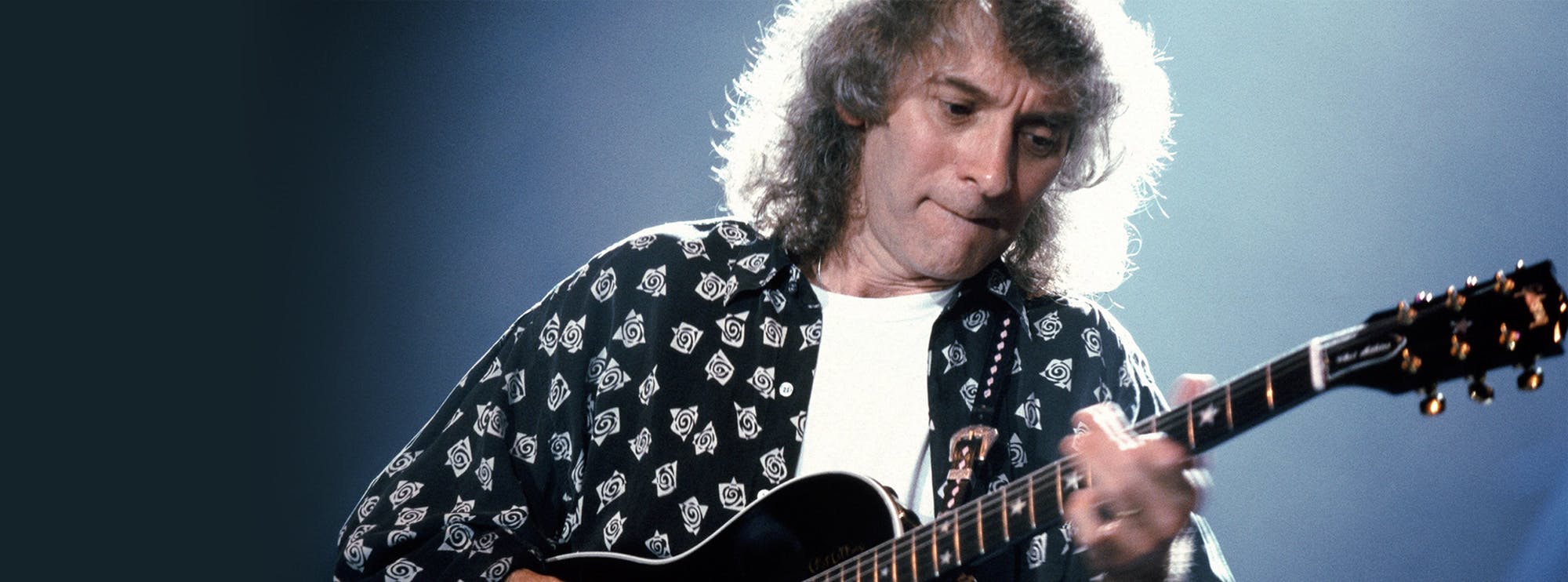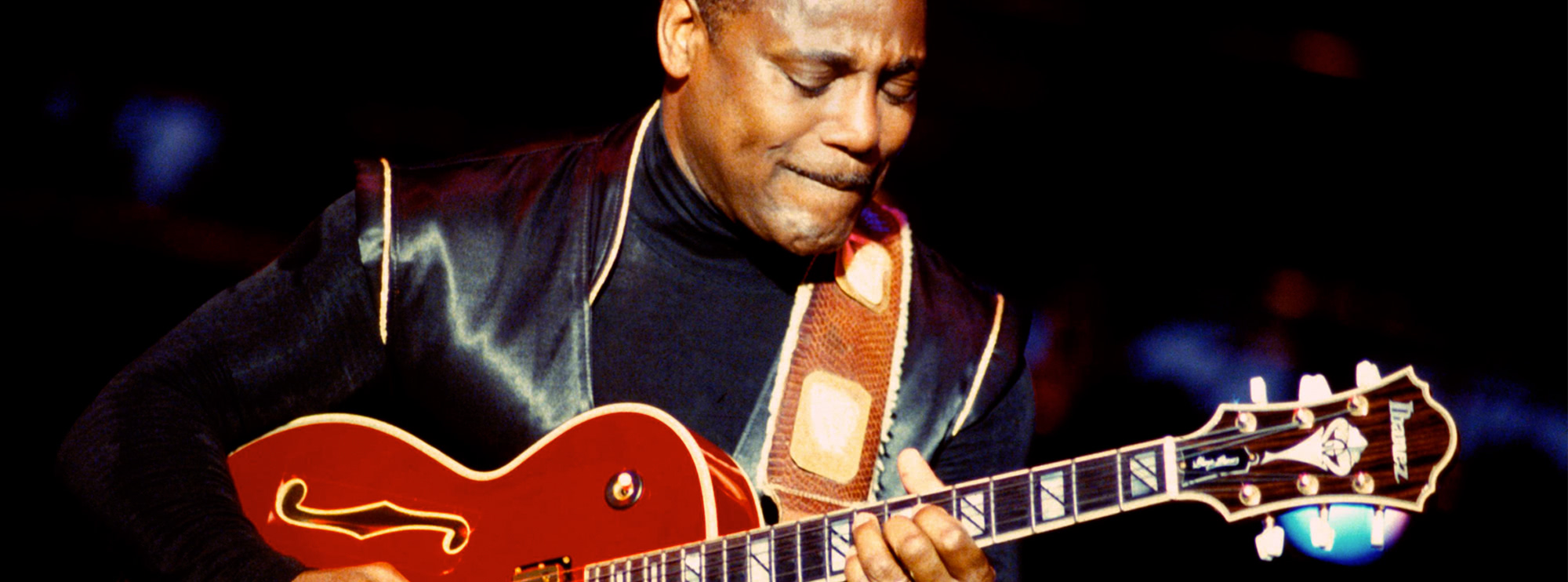Blue Jean Blues by ZZ Top - Guitar Lesson Breakdown
"Blue Jean Blues" by ZZ Top is a soulful, slow blues track from their 1975 album Fandango!, and it’s a perfect example of how emotion and technique come together in Billy Gibbons’ playing. This track is a masterclass in phrasing, tone, and feel, and our note-for-note guitar lesson will help you capture the essence of Gibbons’ bluesy style. The lesson focuses on key techniques that define the song: barre chords, slides, vibrato, and bluesy bends. Each technique plays an important role in bringing out the song’s deep, expressive quality, and mastering them will elevate your overall guitar playing, particularly in blues and rock styles. This lesson is taught by Danny Gill.
Key Techniques in Blue Jean Blues
Barre Chords
Barre chords are an essential part of the rhythm guitar in "Blue Jean Blues." Barre chords involve using one finger to press down multiple strings across the fretboard, allowing you to play full chord shapes up and down the neck. This technique is key to creating rich, full-sounding chords that can easily move across different positions.
In this track, Gibbons uses barre chords to create a strong, stable foundation that supports his lead lines. Mastering barre chords will improve your chord transitions and hand strength, making it easier to play full, powerful chords anywhere on the neck. Our lesson breaks down the specific barre chord shapes used in "Blue Jean Blues", helping you improve your rhythm guitar playing and finger dexterity.
Slides
Slides are a technique used throughout "Blue Jean Blues" to create smooth transitions between notes, adding a fluid, connected feel to the guitar lines. A slide is performed by moving your fretting finger along the string from one note to another without lifting it off the fretboard, resulting in a seamless glide between pitches. This technique adds a vocal-like quality to Gibbons’ playing, making his phrases sound more expressive and dynamic.
In our lesson, we’ll guide you through Gibbons’ use of slides in both his rhythm and lead playing, helping you develop a more fluid approach to phrasing. Mastering slides will improve your ability to connect notes smoothly, making your playing sound more polished and professional.
Vibrato
Vibrato is one of the most important techniques for adding expression to your playing, and it’s used to great effect in "Blue Jean Blues." Vibrato involves oscillating the pitch of a note by bending and releasing the string in a controlled manner, creating a rich, singing quality that adds depth to sustained notes. Gibbons’ vibrato in this track is slow, wide, and deeply expressive, giving his notes a vocal-like quality that enhances the emotional impact of his playing.
Learning to control your vibrato will make your solos more expressive and impactful. Our lesson will show you how to apply vibrato in the style of Billy Gibbons, helping you develop the precision and control needed to add this powerful technique to your own playing.
Bluesy Bends
Bluesy bends are a hallmark of Gibbons’ playing, and they are used extensively throughout "Blue Jean Blues." String bending allows you to raise the pitch of a note by pushing or pulling the string, mimicking the sound of the human voice. In this song, Gibbons uses bends to add emotion and tension to his phrases, often bending notes up to pitch and holding them with controlled vibrato.
Mastering bluesy bends will greatly improve your ability to add expression to your solos. This technique is essential for playing blues and rock solos with emotion and feeling. In our lesson, we’ll break down Gibbons’ approach to bending, helping you develop the accuracy and control needed to make your bends sound smooth and in tune.
About the Guitar Player in Blue Jean Blues
Billy Gibbons, the lead guitarist of ZZ Top, is widely regarded as one of the greatest blues-rock guitarists of all time. His playing in "Blue Jean Blues" is a testament to his mastery of blues phrasing and tone. With his deep understanding of the blues and his signature guitar tone, Gibbons brings a level of emotion and feel to this track that is both raw and refined. His use of slow, melodic lines paired with tasteful techniques like vibrato and string bending makes this song a powerful study in how to craft a guitar part that resonates with the listener.
In "Blue Jean Blues," Gibbons uses his guitar to tell a story, relying heavily on dynamics, phrasing, and tone to convey emotion. His approach to the song is minimalist but highly effective, showcasing his ability to make every note count. By learning to play "Blue Jean Blues," guitarists can gain insight into the power of simplicity and the importance of feel in blues playing.
Guitar Techniques Covered in This Lesson
By mastering these techniques, you’ll be well-equipped to play "Blue Jean Blues" with the same soulful style as Billy Gibbons. Dive into our lesson and learn how to bring this blues-rock classic to life with precision, tone, and feel!

About The Tutor
Tutor Profile
Danny Gill
Danny Gill is, without a doubt, the most loved tutor by our community. With an incredible array of DVDs and web lessons for LickLibrary covering a wide variety of topics all of which he covers with incredible detail, it's no wonder he carries as much respect as he does. As...



